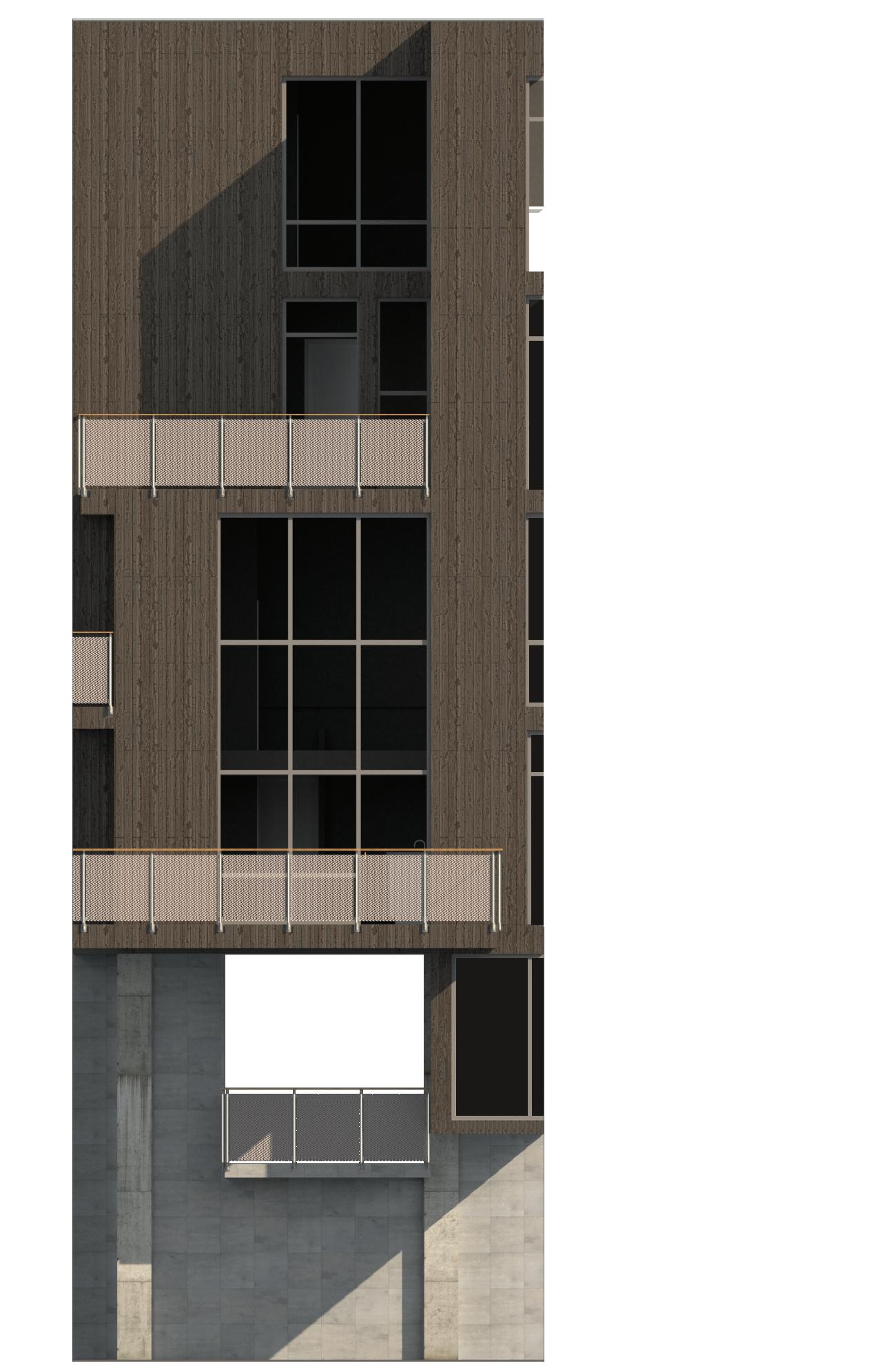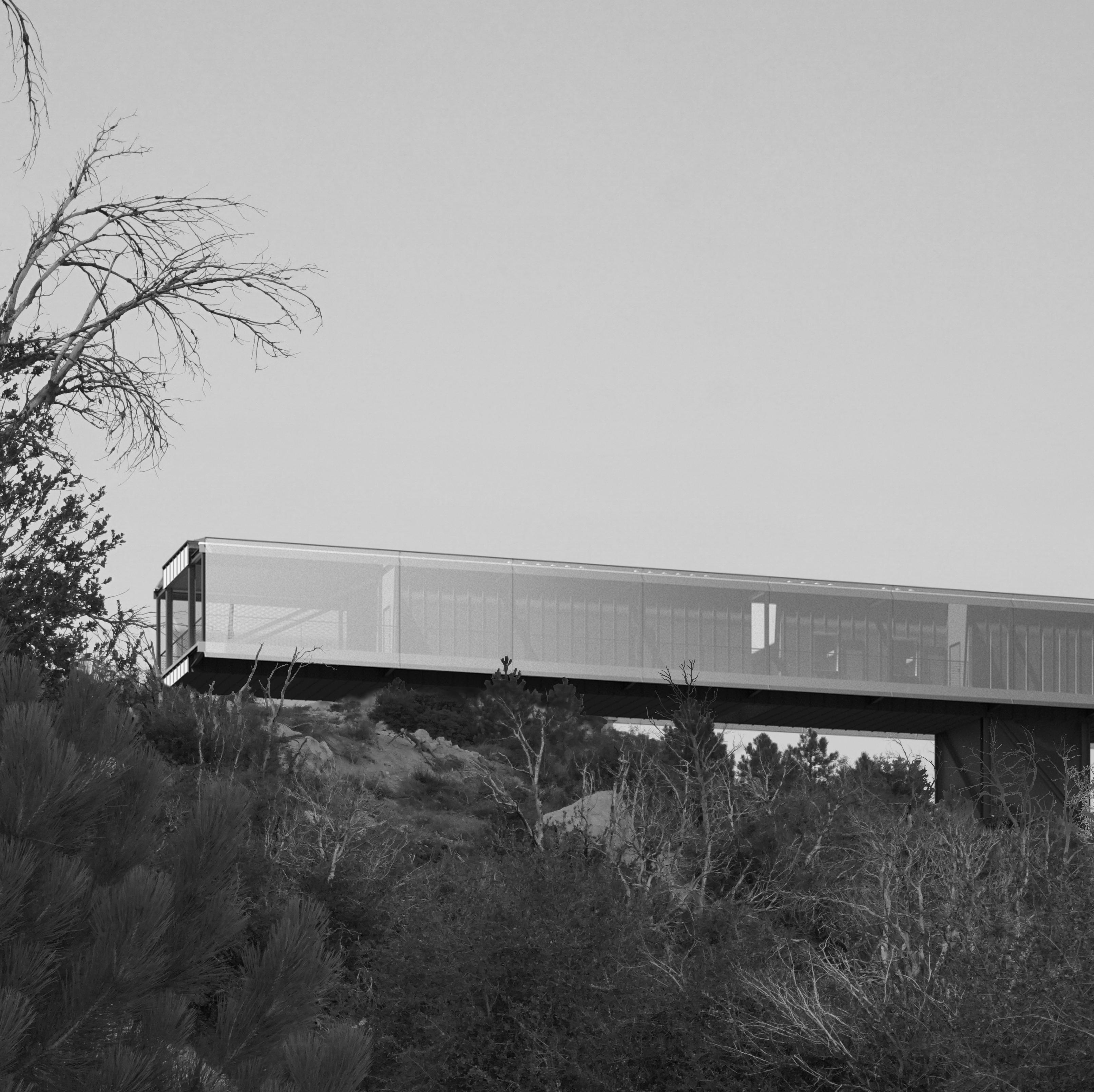
1 minute read
ETHAN N. VANBEEK PORTFOLIO
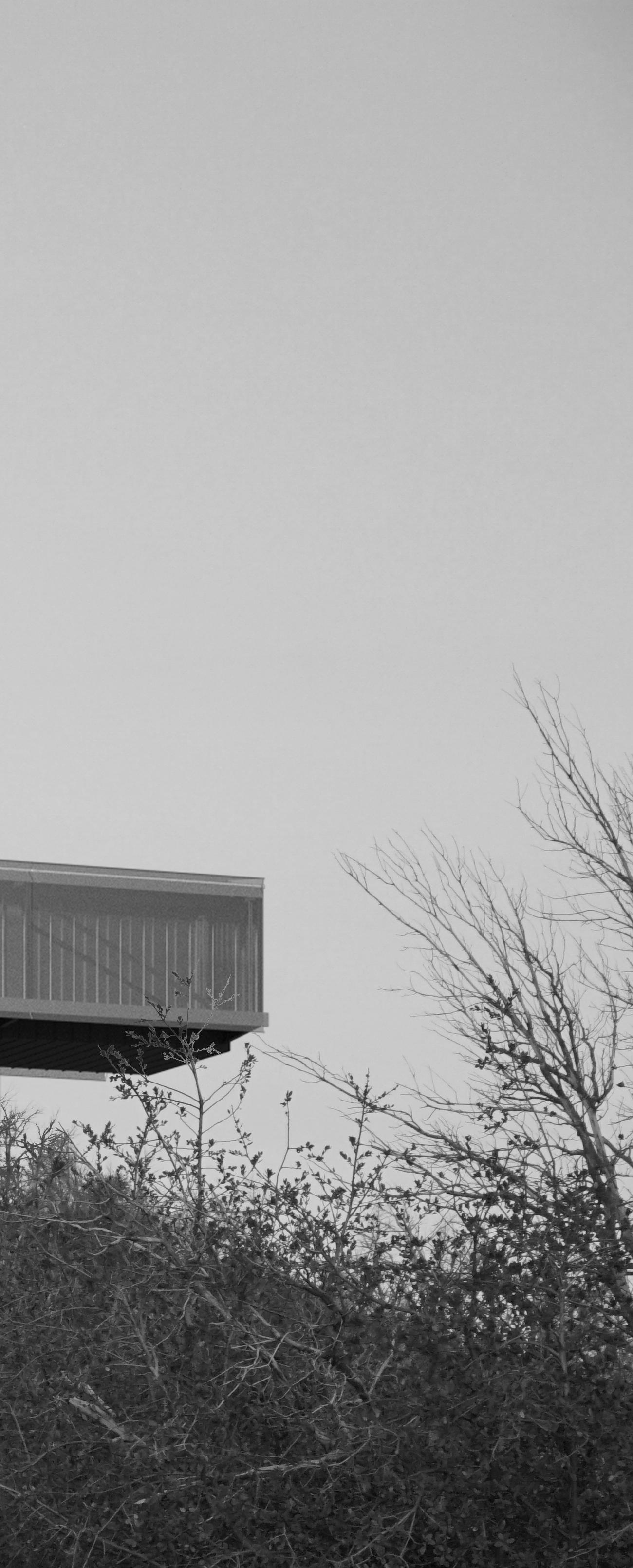
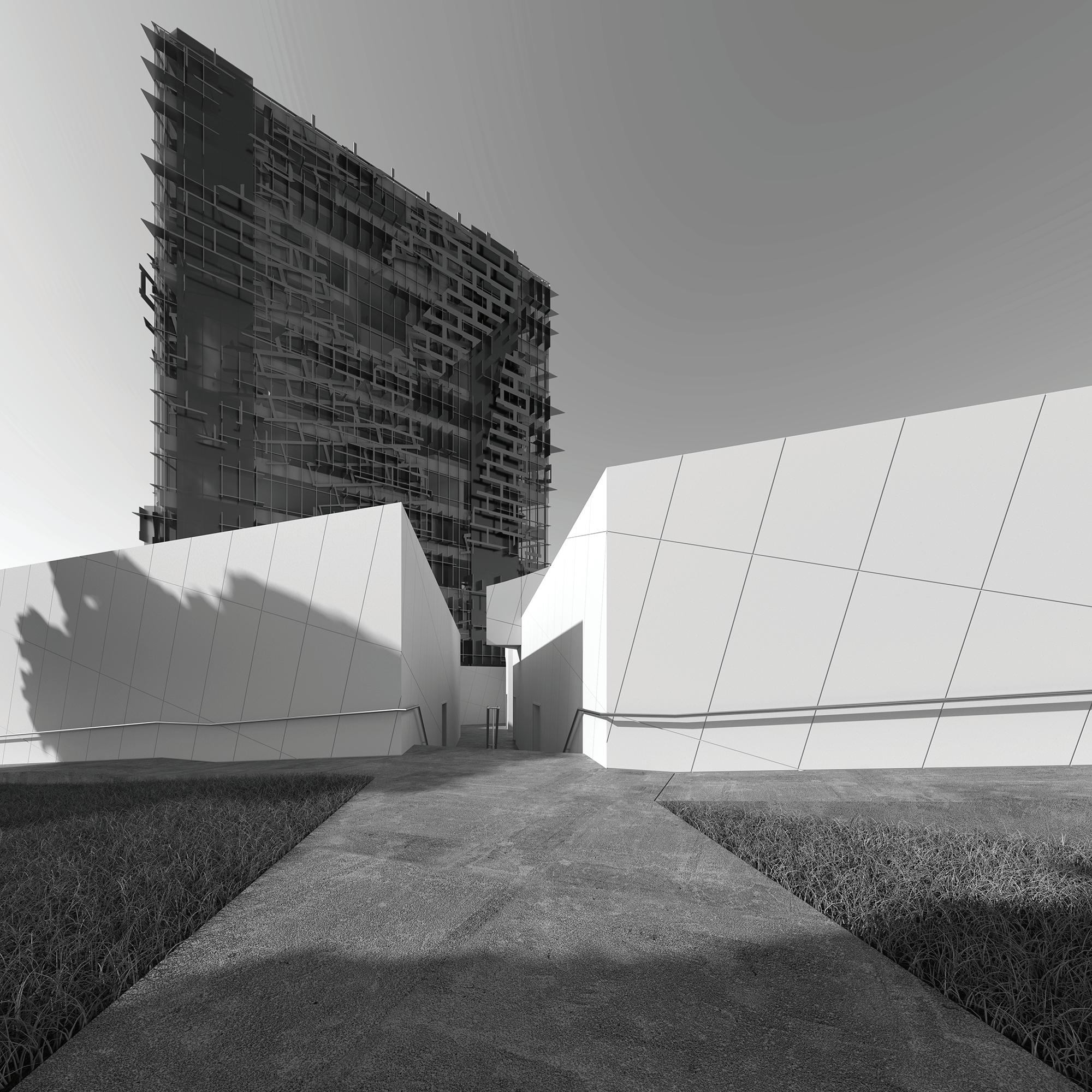
Advertisement
The first stage of the generative process was to develop a sculptural armature from a field of differing orthogonal, angular, and curved lines. The datums of this sculptural relief were then identified and used to form the major walkways within the plinth. These walkways generate spaces of spatial ambiguity at their intersections and provide moments with long site lines and a sense of visual rhythm.
A similar datum-based generative process was then applied to the tower. The field that generated the original armature was cropped and the axes were again identified and used as paths that carved the massing while also creating space for program. Datums are split, trimmed, offset, dropped and picked back up again. These space-making operations occurred in plan, section, and elevation and aided in cohering the differing typologies of plinth and tower. This proved to be one of the emergent struggles of this studio project. In order to connect the typologies, more subtle references are formed based on the subtractions in plan and section as well as in the planar expressions of the facade.
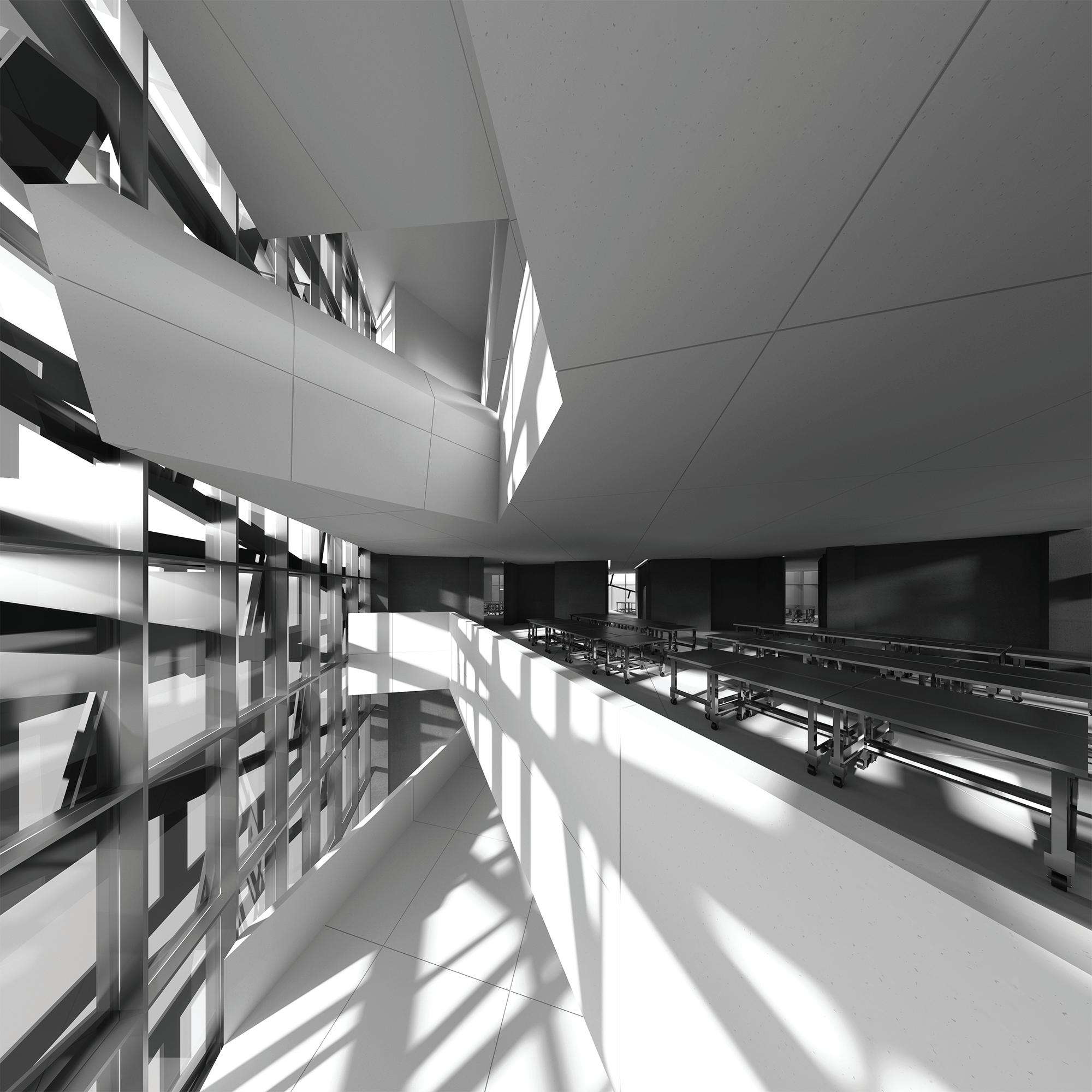
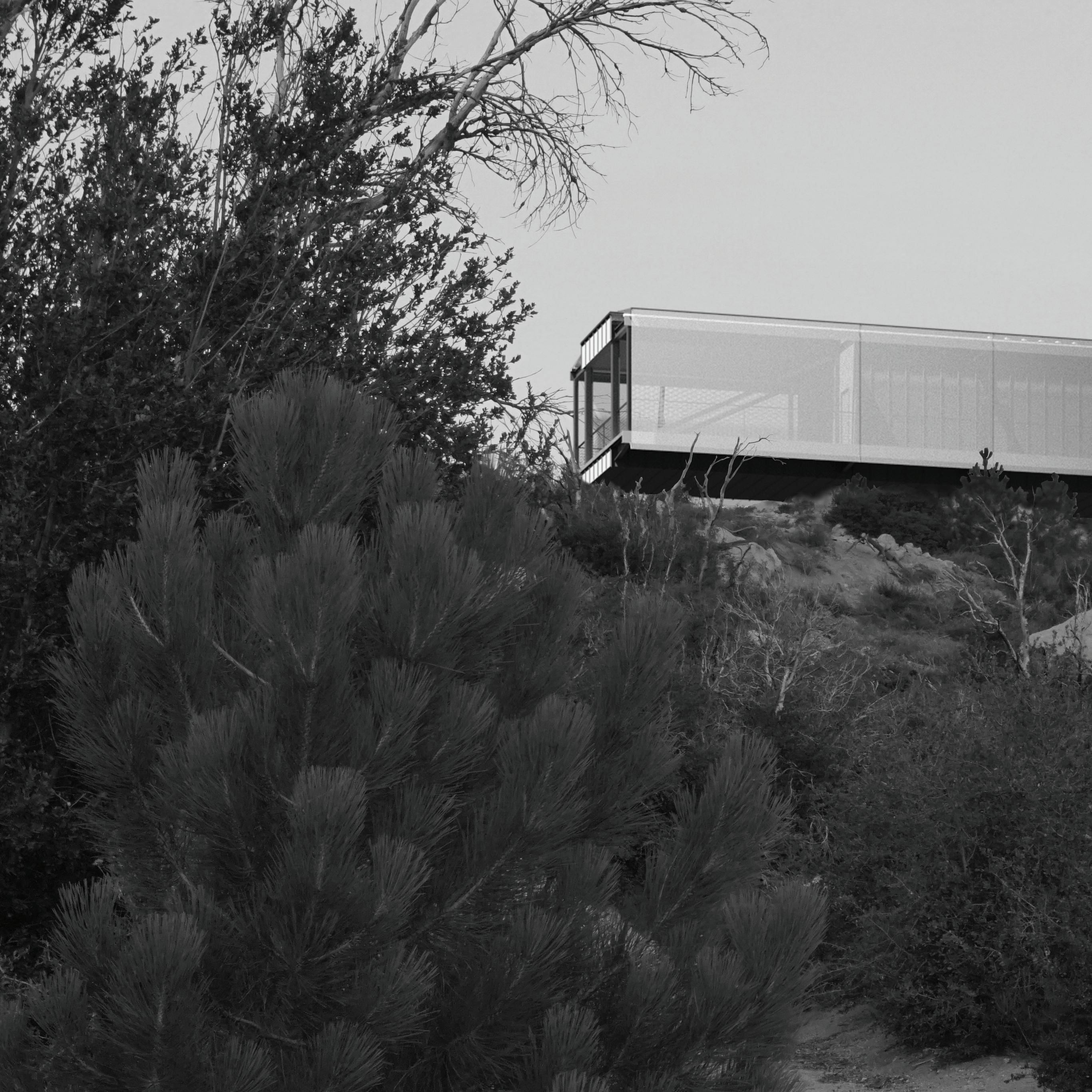
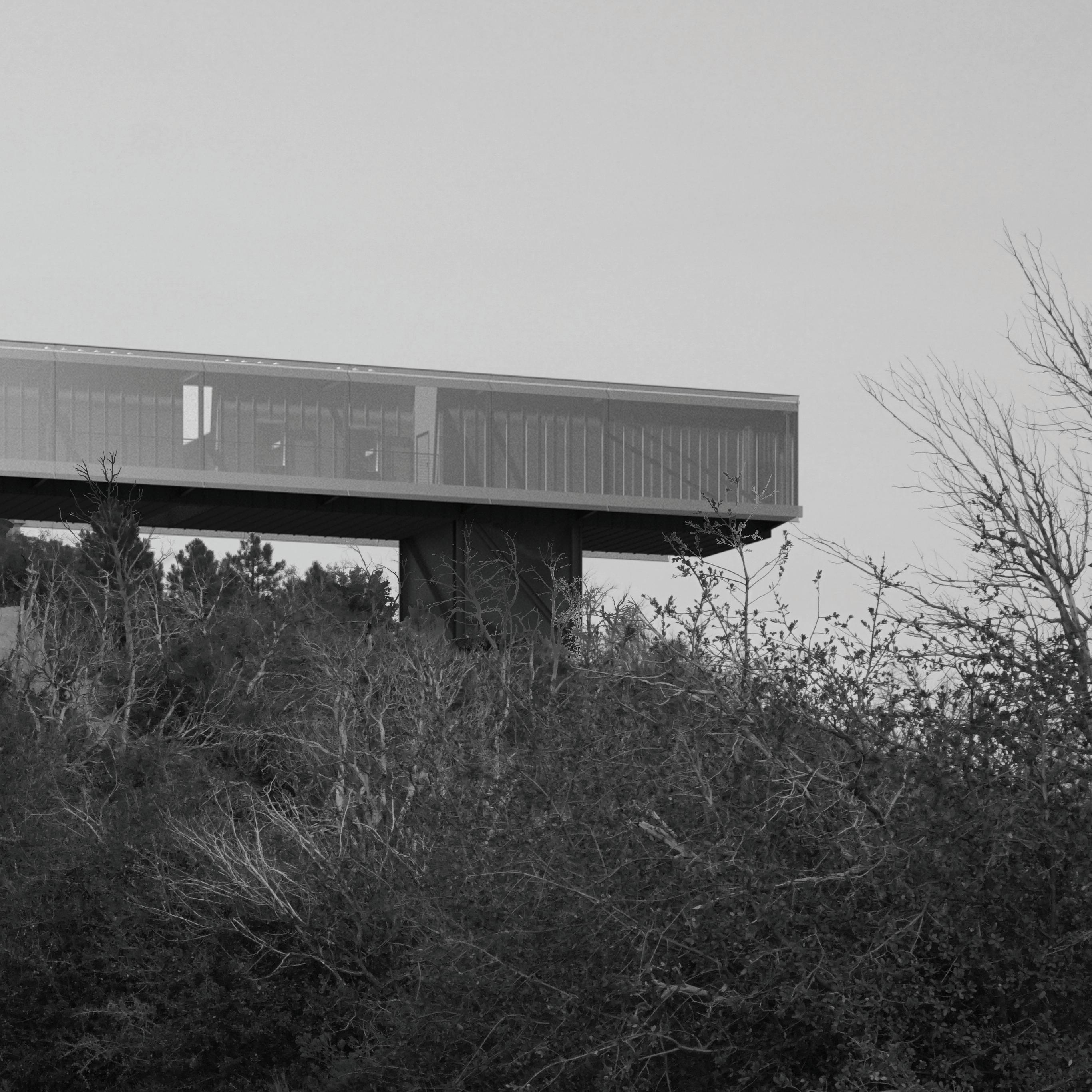
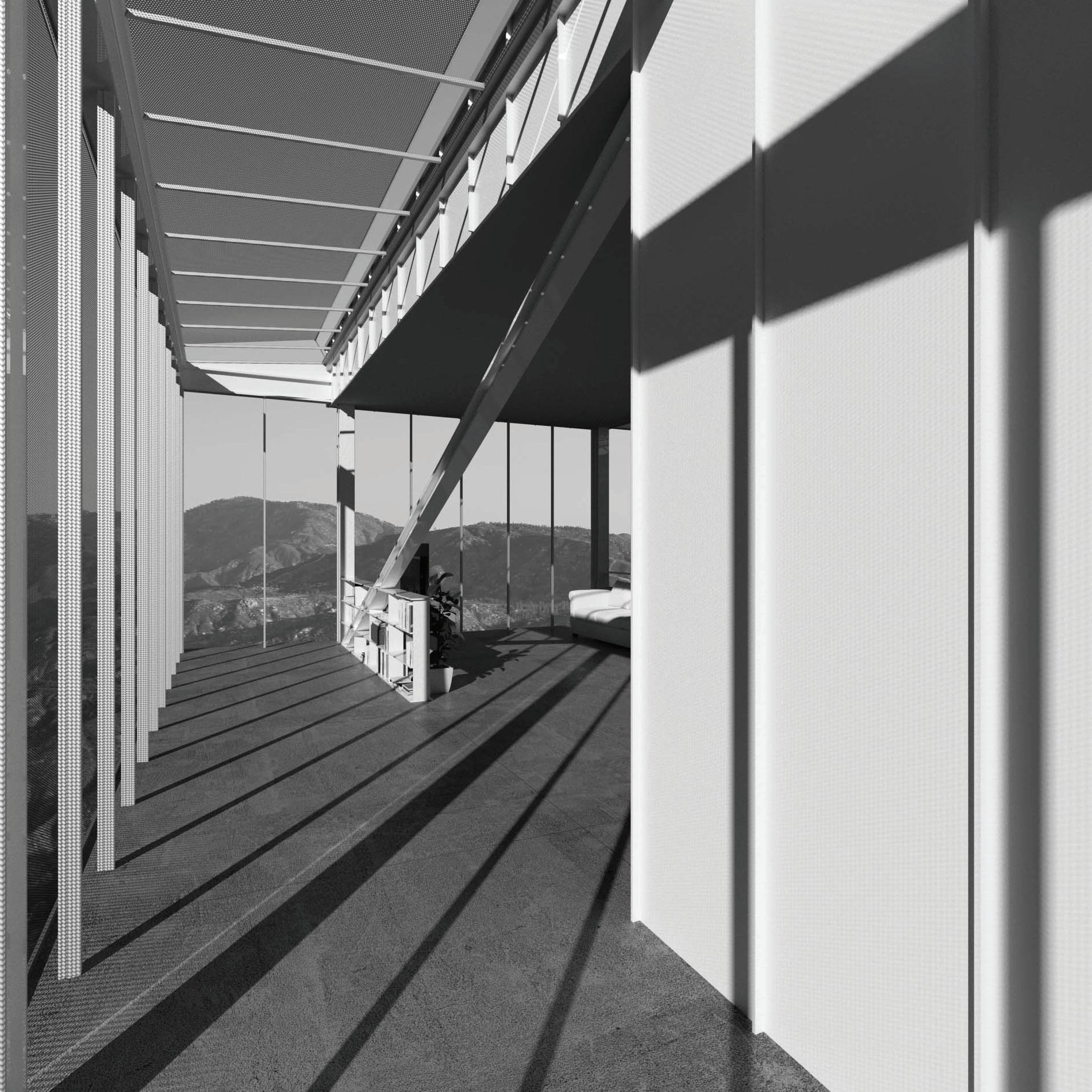
Interior Exterior Deck
Roof Membrane
Vapor Barrier
1- 1 2" Rigid Insula�on
1 2" OSB
2x" Studs
Wide Flange Steel
Fiberglass Insula�on
3 4 " Gypsum Board
2" Standing Seam Panels
Vapor Barrier
1- 1 2" Rigid Insula�on
1 2" OSB
2x10" Light Gauge Steel
Wide Flange Steel
Fiberglass Insula�on
3 4 " Gypsum Board
Poured Concrete
3" Corrugated Steel Decking
Wide Flange Steel
Fiberglass Insula�on
1 2" OSB
1- 1 2" Rigid Insula�on
Vapor Barrier
2" Standing Seam Panels
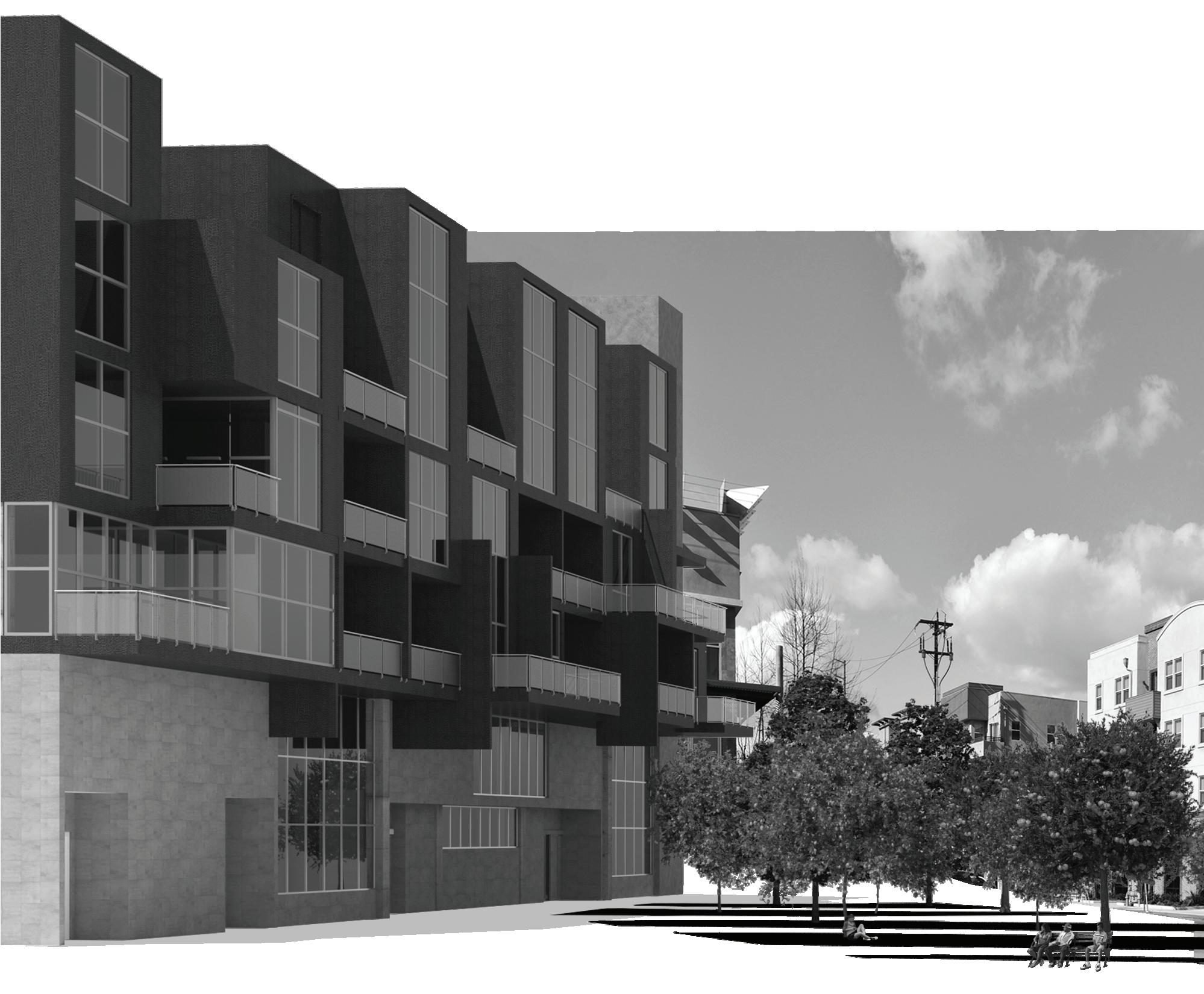
This project is a mixed-use multifamily housing development proposed for Barrio Logan in the city of Santa Ana. This neighborhood is a rapidly densifying transit oriented development that has a series of site specific advantages, namely its proximity to the Santa Ana transit center. In approaching this, the Northmost proposal seeks to act as the primary thoroughfare that redirects foot traffic from the transit center through a shopping promenade and finally onward to downtown Santa Ana.
While the site provides numerous benefits, the primary shortcomings of this neighborhood can be addressed by design — a lack of available green space, as well as a historic food desert. In combating this, the ground floor program dedicates a large portion of its lot coverage to a supermarket. Additionally, green space, as well as bands of urban farmland, are dispersed throughout the project.
The 65 housing units situated above the commercial podium are a blend of studio, one-bedroom, two-bedroom, and live-work dwellings. These units are organized along a series of party walls that efficiently act as the backbone that provides much of the project's plumbing and shear requirements. The units shift in order to produce ample daylighting, while simultaneously providing the residents with privacy.
